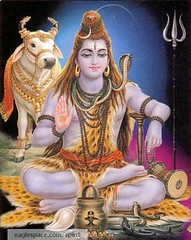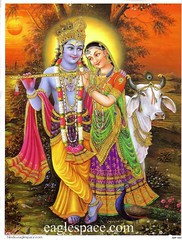The Brahma Sutras (also known as the Vedanta Sutras) form the second pillar of hinduism – they are the philosophical foundation of hindu thought and discuss the nature and relationship of the individual soul (Atman) and the universal soul (Brahman). Brahma Sutras can be viewed as the ‘Science of the Soul’. Read the full article
The Brahma Sutras were written by Rishi Badarayana, whose other famous name is Sri Veda Vyasa (also the celebrated author of the Mahabharata). Brahma Sutra is called the Nyaya or Yukti Sutra, because it logically reconciles and explains the various questions and doubts which may possibly come while studying the Upanishads.
According to Swami Krishnananda of the Divine Life Society, the Brahma Sutras talk about the distinction between the physical body and the Atman.
The erroneous identification of the body with the pure Atman is the root cause for human sufferings and miseries and for births and deaths. You identify yourself with the body (‘I am fair, dark, stout etc.’), with the senses or with the mind. The object of the Brahma Sutras is to remove the avidya (ignorance) which causes this identification of the Soul with the body and help you in the attainment of moksha (emancipation) through knowledge of Brahman.
Several scholars (Shankara, Ramanuja and others) have written commentaries on the Brahma Sutras with different interpretations of the nature of Brahman and the various paths on how to realize the true nature of Brahman (or moksha).
The Commentaries of Shankara
Shankara proposed that there is one absolute Brahman and the physical world manifests due to maya or the illusory power of Brahman. The individual soul is limited due to avidya and identification with the physical body. Shankara bhasya (commentary) is the oldest of all the commentaries and is said to accurately reflect the intended meaning of Sri Veda Vyasa. Shankara’s motivation was to combat the negative effects of blind ritualism prevalent in hinduism during his time – he proposed that the individual soul can merge with Brahman when avidya is destroyed through meditation and purification of the heart by selfless service.
The Commentaries of Ramanuja
In contrast, Ramanuja (one of the founders of the bhakti or devotional cult) proposed that individual souls will never be entirely resolved in Brahman. Brahman is a Personal God with attributes and intelligence is one of his chief attributes. Bhakti or devotion is Shankara’s proposed path to liberation – the liberated soul will reside in permanent bliss in Vaikuntha with Lord Narayana. Ramanuja (and later Sri Madhava) started the bhakti cults to provide an alternate path to the common folk who could not relate to the “high-level” philosophy of Ramanuja. These bhakti cults are still alive today in the form of Krishna bhaktas, Shiva bhaktas, Devi bhaktas, etc.
Which path is right for you?
Isn’t it great that hinduism offers you the choice to select the path that is best suited to your temperament and spiritual station in life? So – you have been given the power to choose – but remember, “with great power, comes great responsibility”. So, exercise your choice carefully, but without fear, because no matter what choice you make, all the paths lead to the same destination – Brahman – the knowledge of the real you.
Did you like this article? Do you have questions about the concepts in this article? Please share with us in the comments below.


